Miami Gardens has changed so much in its 20 years. It’s about to change even more
When Carleena Scott reminisces about growing up near where Hard Rock Stadium now sits, she thinks of the barbeque pit her family frequently patronized and the man selling collard greens standing on a street corner.
“We were very much underdeveloped,” she says, remembering passing along Northwest 183rd Street and seeing nothing but open fields. “There was a lot of open land when it was Carol City.”
The sprawling area that was once unincorporated Dade County is now Miami Gardens, a city celebrating 20 years. And while it bears similarities to Carol City — Black-owned businesses and middle-class Black families — Miami Gardens has transformed with development.
Scott, 47, embraces the change. “I’m like, OK, what are they getting ready to build here now? And I honestly will keep riding that street to see it come alive,” she said.
Since it became Miami Gardens, the city has seen a vast transformation with strip malls containing retailers such as Foot Locker, Old Navy and Starbucks, major big-box stores including Walmart, and supermarket chain Aldi.
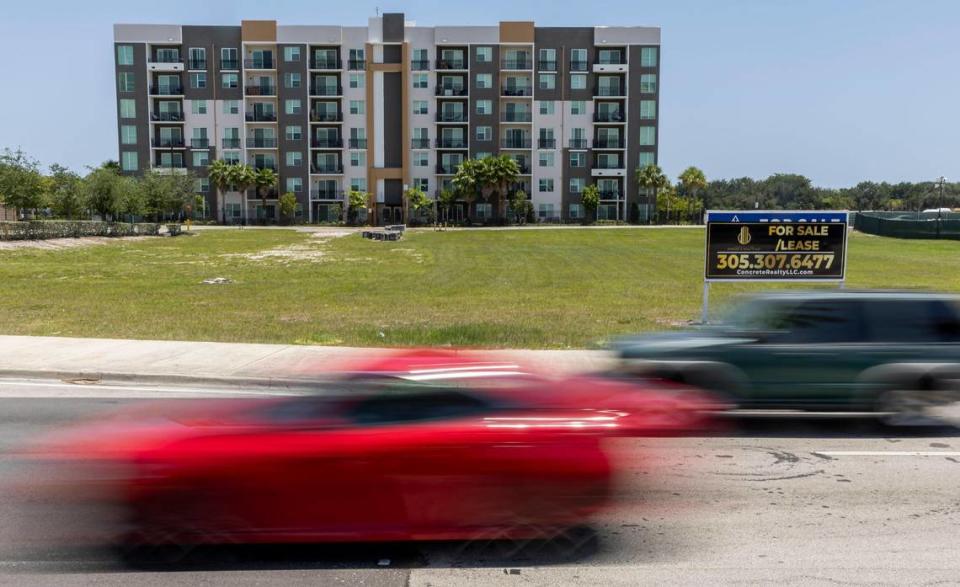
The city’s population of 110,867 is 66.8% Black, according to recent U.S. Census data, making Miami Gardens the largest majority-Black city in Florida. Newcomers are bringing more diversity: In 2010, there were 2,408 residents who identified as two ore more races, according to American Community Survey data from the U.S. Census. In 2020, that number rose to more than 20,000.
READ MORE: ‘Skyline of Miami Gardens.’ Formula 1 museum, hotels, apartments planned near Hard Rock
As the city turns 20, Mayor Rodney Harris envisions a Miami Gardens that caters to longtime residents and tourists with developments such as two hotels planned along the city’s main thoroughfare, a performing arts center and a culinary arts institute.
“I think we need a nice hotel in Miami Gardens. I’m all for change,” Scott said, but she also hopes the city can maintain the fabric of the community while ensuring it grows for future residents and visitors.
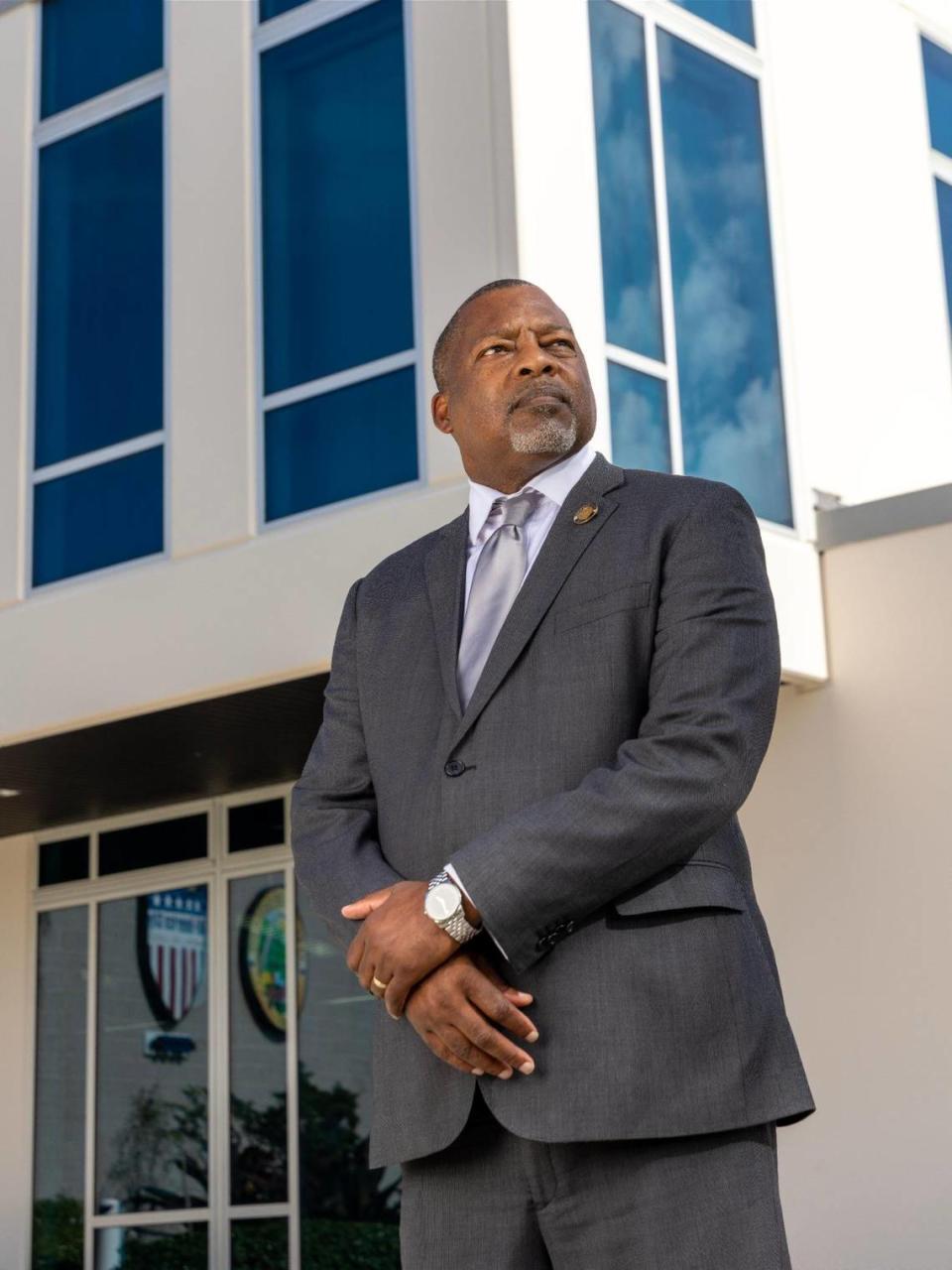
“I know this is a bedroom community, but in order for us to survive, we’re going to have to do development in order for the city to continue to thrive and be a city that is self-sustainable,” Harris said in an interview with the Miami Herald.
Harris is the third mayor of Miami Gardens and has inherited a city that has grown economically in part due to the Miami Dolphins’ stadium built in 1987 — a decision that remains a contentious issue among some residents.
He is hoping that residents will support future growth and development. “We have our residents stay active and be involved — not necessarily with the decision-making — but they give their input and talk about some of the things they want to see coming into the community.”
Carol City memories
Before it was Miami Gardens, it was Carol City, an unincorporated neighborhood with a population of roughly 60,000 in what was then Dade County.
Gena Grant’s family moved to Carol City in 1977. “They still were burning crosses at Scott Park, in the areas we frequent now,” she said her mother told her in recounting their move to the area. Cross burnings were done by the Ku Klux Klan as a way to threaten Black communities. “They still were burning crosses and different things because it was very much segregated still.”
But even then, Carol City was a place in transition. The city was a middle-class enclave with modest development and a diverse population: 48% of residents were Black, 33% were Latino and 19% were white, the Miami Herald reported in November 1978.
Harris said Carol City was the place to be. “I would come out here all the time. We would do our Easter egg hunts out here,” he fondly recalled. “I would visit people here in their homes in the Carol City area, and when I was a young man, I always said that when I got to be grown, that I was gonna buy me a house in Carol City. So back in 1997, I was fortunate enough to purchase a home here before they incorporated.”
RELATED: Vacant hospital building in Miami Gardens being demolished after two decades empty
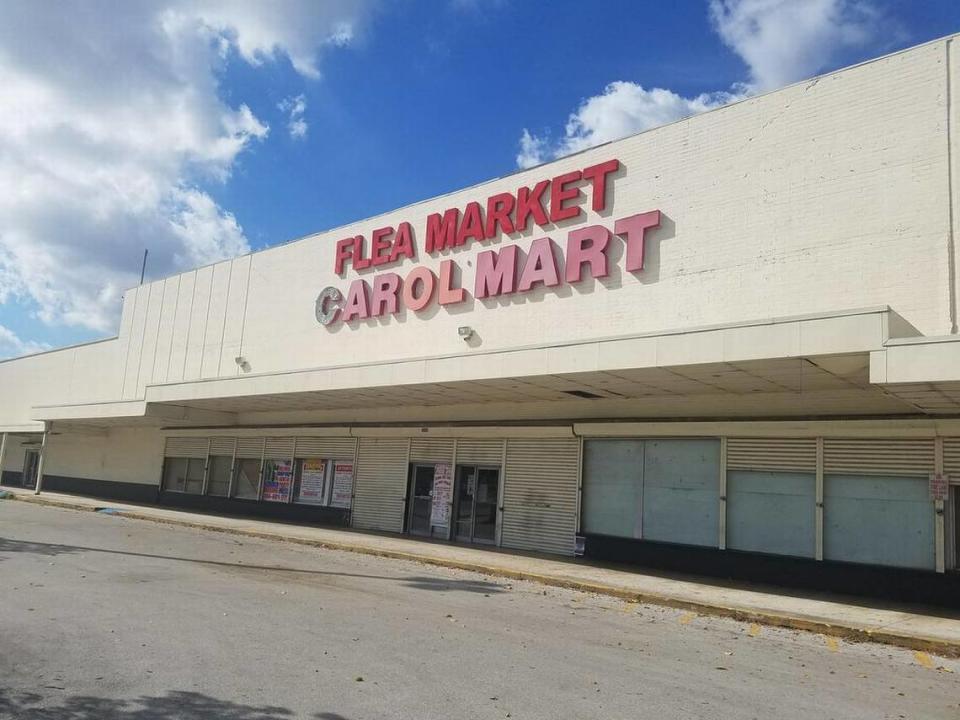
Harris bought his home following initial efforts to incorporate the area into what would have been called Destiny. “We were trying to create and control our own destiny,” said former Miami-Dade County Commissioner Betty Ferguson, who helped spearhead the charge to create Miami Gardens.
Ferguson’s family has lived in the area since 1949 and she has seen the region transform from a predominantly Black tight-knit community to a budding tourist destination. She described a neighborhood that consisted of military veterans in the Bunche Park area and little development.
“You had lots of groves, cow pastures, basically unincorporated and undeveloped areas,” she said. “When my family first moved into the area, there were no public schools. We had to be bused out of the area.” By the time she was in the first grade, Bunche Park Elementary School had been built. “So, I was in the first first-grade class.”
The construction of what was then called Joe Robbie Stadium changed the area’s landscape and caused a rift between millionaire and Dolphins owner Joe Robbie, the county and Black residents who lived in close proximity.
It would be an ongoing feud.
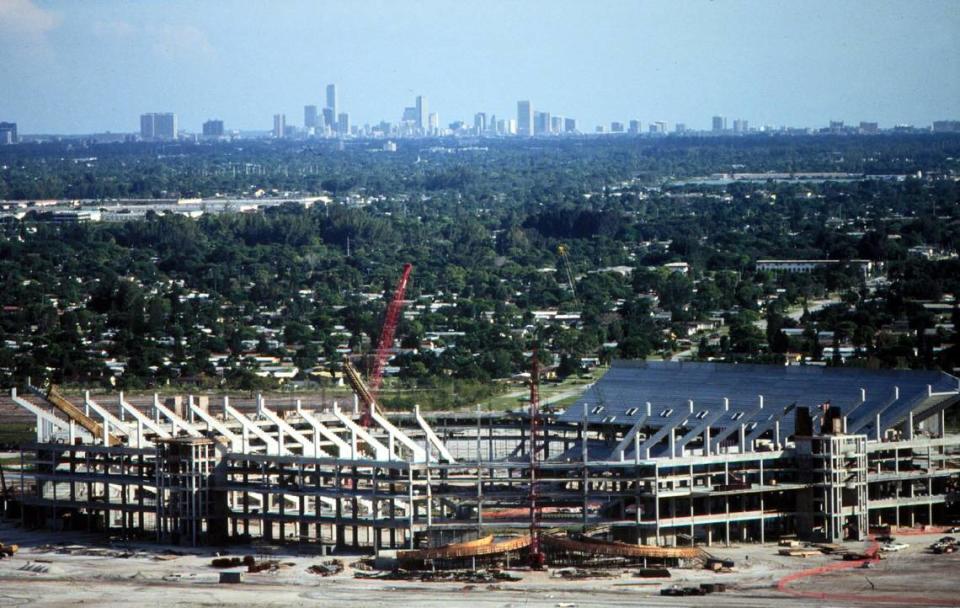
READ: New Miami Gardens Boys and Girls Club gets funding for activities at elementary school
Ferguson said residents felt ignored when the decision was made to put a stadium in a predominantly Black neighborhood. In 1984 residents got wind that a stadium was being built near the Lake Lucerne neighborhood. “We were totally disrespected because no one talked to the residents about plans to build a stadium,” she said.
She recalled how Black families in the Overtown neighborhood were displaced when I-95 was built. For Ferguson, a stadium built in another predominantly Black neighborhood, where former Overtown residents had moved to, was a reminder of the displacement of those Black families.
“We had no power, but they didn’t even have the courtesy to say ‘this is what we’re planning. We just want you to know what’s going on,’” she said. “Just no discussion whatsoever.”
Complaints about the traffic during events at Hard Rock Stadium remain. Scott, who lives near the stadium, said she’s frequently seen families who’ve parked in her neighborhood walking around lost on their way to the stadium.
“They’re getting lost, they’re parking extremely too far, and they’re walking up and down the street all times of the day,” she said.
The stadium is home to the Miami Dolphins, the city’s premier musical event Jazz in The Gardens, the Miami Open tennis tournament, and the University of Miami football team. The Miami Marlins played there until their current stadium, loanDepot Park, opened in Little Havana in 2012. More recently it has become the site for the Formula One Miami Grand Prix.
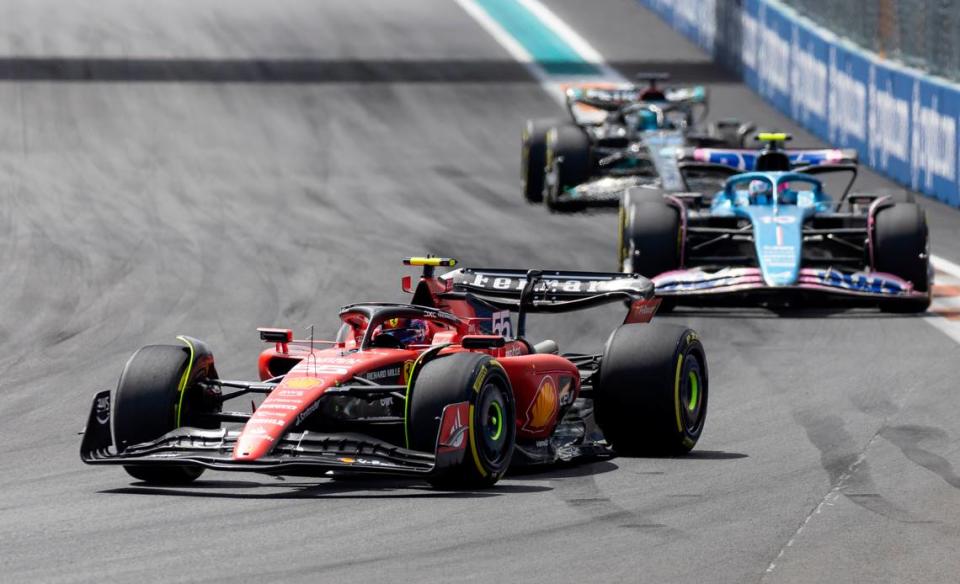
Becoming Miami Gardens
Conversations about incorporating grew as residents complained of services such as policing, park improvements, and roadwork not being met.
Ferguson said she and other residents wondered why other cities, such as Coral Gables, were receiving better services than they were. “We figured the municipalities control how their dollars are spent, same tax dollars, but they control how they are spent and how much is being spent for beautification,” she said.
Residents wanted to have a say in the decisions made for their neighborhoods.
“It was a matter of watching other areas control their tax dollars a little bit better, and we were just left to take whatever they dished out,” Ferguson said.
READ MORE: ‘We have to begin to build.’ Meet Miami Gardens, the epicenter of Dade’s Black middle class
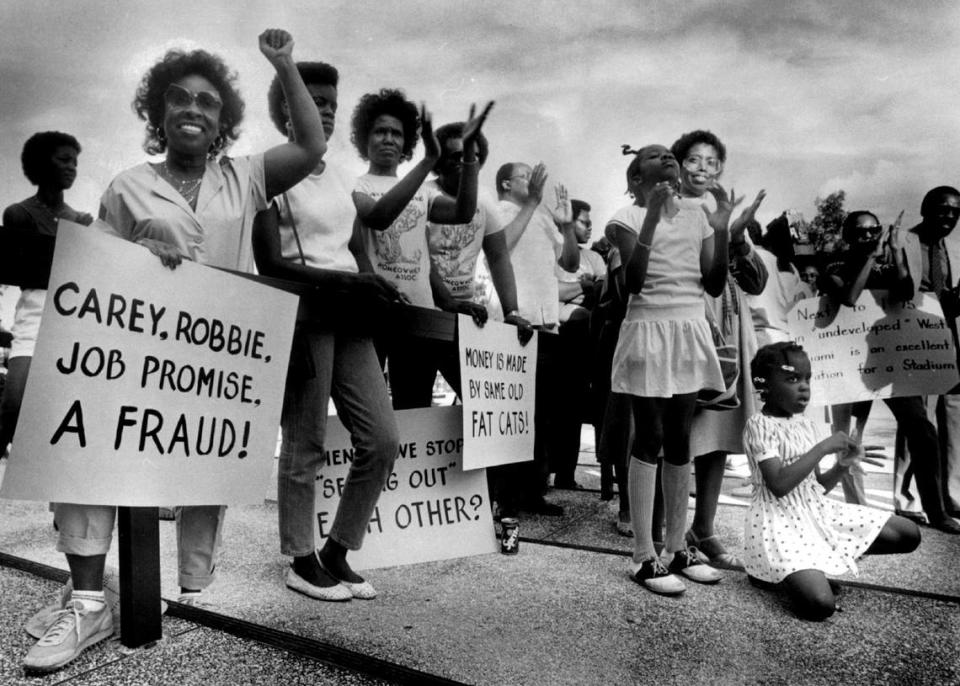
The city’s first mayor, Shirley Gibson, said many residents were convinced they would not be able to turn the area into a recognized municipality, in part because they were told so.
“You know, a lot of people were concerned that we would not be successful, because the county said we were too poor to be our own city,” she said. “So when your government tells you that it resonates, and so we had to try to overcome that.”
Gibson and other organizers also had to contend with a $100,000 campaign launched by Blockbuster Video founder and the new Dolphins stadium and team owner Wayne Huizenga to thwart the city’s efforts to incorporate.
“He hired an outside group to run a phone bank to scare our senior citizens to vote against us incorporating,” Ferguson said, adding she did not know of the efforts until the Miami Herald published a story after the first failed bid to incorporate. “Our senior citizens were told ‘oh, your taxes are about to go up, you’re gonna lose your house.’”
In September 1995, 57% of residents voted not to incorporate. Of the 18,000 registered voters, less than a third cast ballots.
U.S. Rep Frederica Wilson was a principal at Skyway Elementary School, which is now named after her, when the city was trying to incorporate. “People were disappointed. They were destroyed because they didn’t want to share what they called a bedroom community with the sports arena,” she said.
Gibson remained determined. “We had a lot of rectifying and convincing to do before we could get the city,” she said.
Reflecting on how the first efforts failed, Gibson remembers asking a white businessman why he was against incorporating. “He said, ‘I think about how we’ — this is a white man — ‘how we treated you in this community. And I figured that if you became the ones in charge, you were going to treat us the same way,’” she recounted.
“I will never forget that as long as I live,” she said.
Business owner Joy St. Clair grew up in the Liberty City neighborhood, but she and her family often went grocery shopping and had doctor appointments in Carol City. She remembers her mother taking her to see a demonstration in support of the city incorporating when she was a child.
“We went because it was really important to kind of be a part of that history,” St. Clair said. ”We didn’t know it was going to turn out this way, but just to be a part of that moment of speaking out for change and speaking out for making things better than they are, and better than we think that they have to be or could be.”
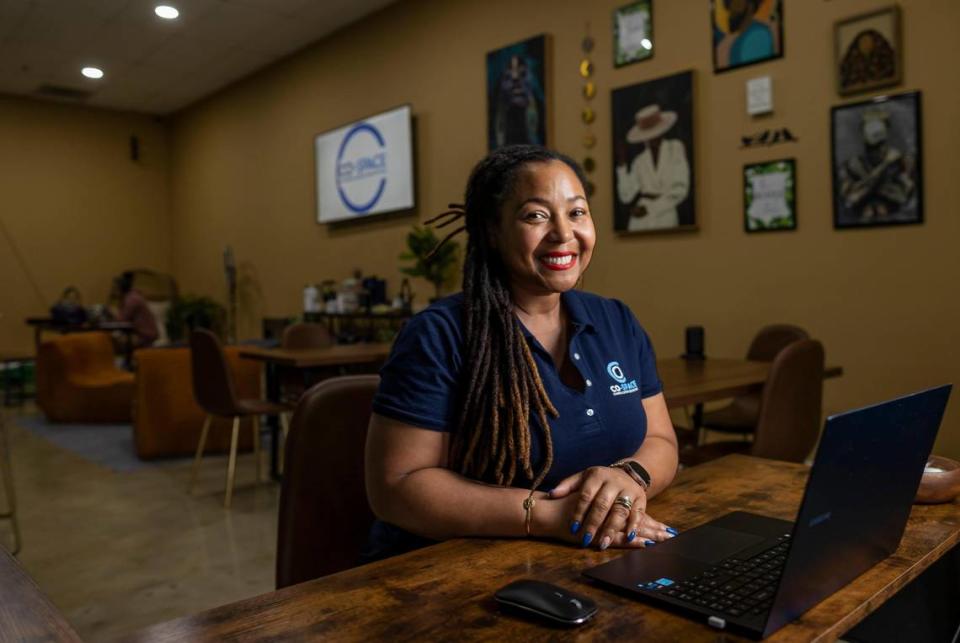
Conversations to become a city reignited in 2002. This time, Gibson said they built more support by going to other cities that were also attempting to incorporate and those that had done it more recently.
“We all were very supportive of each other because we really basically were dealing with the same kind of feedback and the same kind of resistance from Miami-Dade County,” she said.
Gibson and Ferguson said they had to convince residents that the city was not economically disadvantaged as they were often told. In 2000, just a few years before Miami Gardens was incorporated, Carol City had a median family income of about $40,000 and 23% of families made between $50,000 and $75,000, according to the American Community Survey provided by the U.S. Census.
At that time, the U.S. median household income was roughly $42,000 and for Black residents in the U.S. it was about $30,400, according to the U.S. Census. Since becoming Miami Gardens, the median household income for the city has increased to $51,000, according to the latest U.S. Census figures.
Miami Gardens incorporated as a city on May 13, 2003.
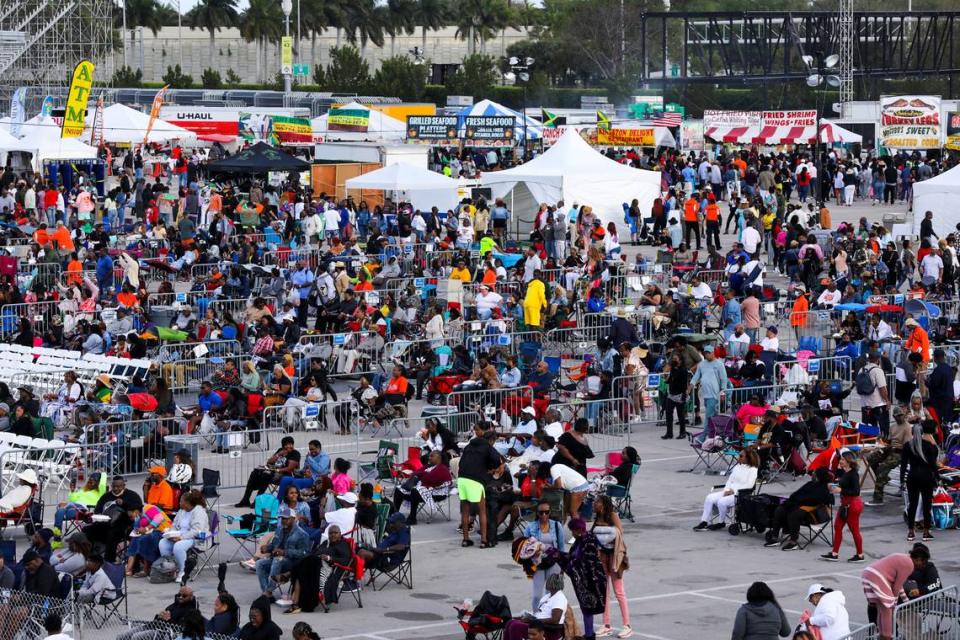
Growing the Gardens
If becoming Miami Gardens hinged on creating stability and reputation, then maintaining the city would focus on growth and development.
The office of Oliver Gilbert, Miami Gardens’ second mayor and Miami-Dade County District 1 commissioner, sits in the heart of the city he helped develop. He, too, recalled when there was practically nothing along 27th Avenue and other parts of the city.
“I grew up in the time when everybody was outside. So we didn’t have video games,” he said. “We played football in the street, literally in the street, or we would jump to the gate over at Parkway and play in the open field, and in the summers, we were going to the Bunche Park pool.”
He spoke fondly of the place that shaped him and reflected on the changes he’s seen since his youth. Gilbert said he used to have to go north to Pembroke Pines or east to Hollywood or Fort Lauderdale because “restaurants didn’t really exist in this area and shops didn’t exist in this area in a meaningful way.”
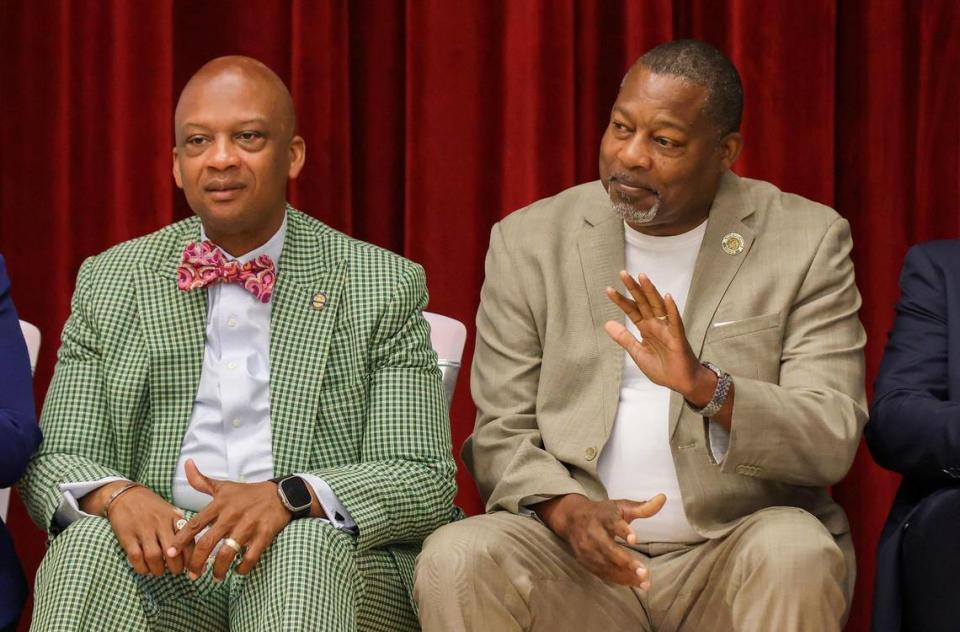
Developing the area meant tearing down the Carol Mart flea market and making way for a strip mall with businesses and retail stores. Gilbert also managed to tweak insurance requirements to make it easier for businesses coming to the city.
A massive mixed-use development that will be known as Miami Gardens City Center is planned on a 35-acre property next to City Hall and police headquarters, and near Hard Rock Stadium.
Developers hope to break ground on the project in late summer or early fall with an expected completion date of 2025, just a year shy of when the 2026 FIFA World Cup will be held at Hard Rock Stadium.
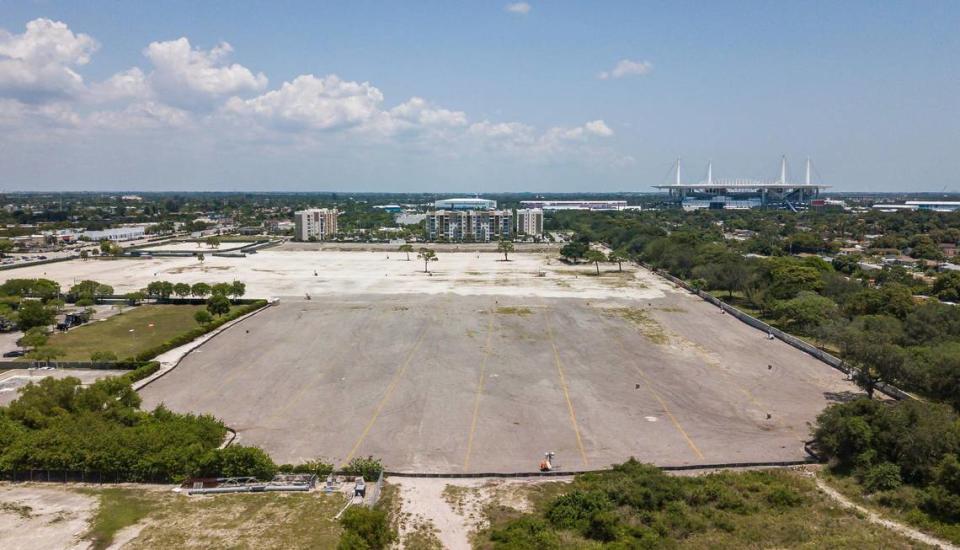
“I feel like it’s going to be another attraction for the city,” St. Clair said. “And people are concerned about traffic, but there’s traffic everywhere. People will figure it out. I’m excited to have something else to do in the city without having to leave.”
Shawnnita Hunter said her son lamented having to drive to Pembroke Pines or Dania Beach to shop or go to the movies. “My kids always talk about stuff like that,” she said. Hunter lived in Liberty City but decided to move to Carol City after graduating from college.
Hunter said she’d like to see “more things to do in the city, like a bowling alley, or skating rink.”
Gibson and Gilbert agreed that growth in Miami Gardens needs to happen, but both also worry about the housing availability in the city.
“We are addressing those issues with some of the housing complexes that we have. We were looking at how to make them affordable,” Harris said. “And I think we have to look at what’s the definition of affordable housing. Because affordable housing for some people is not affordable.”
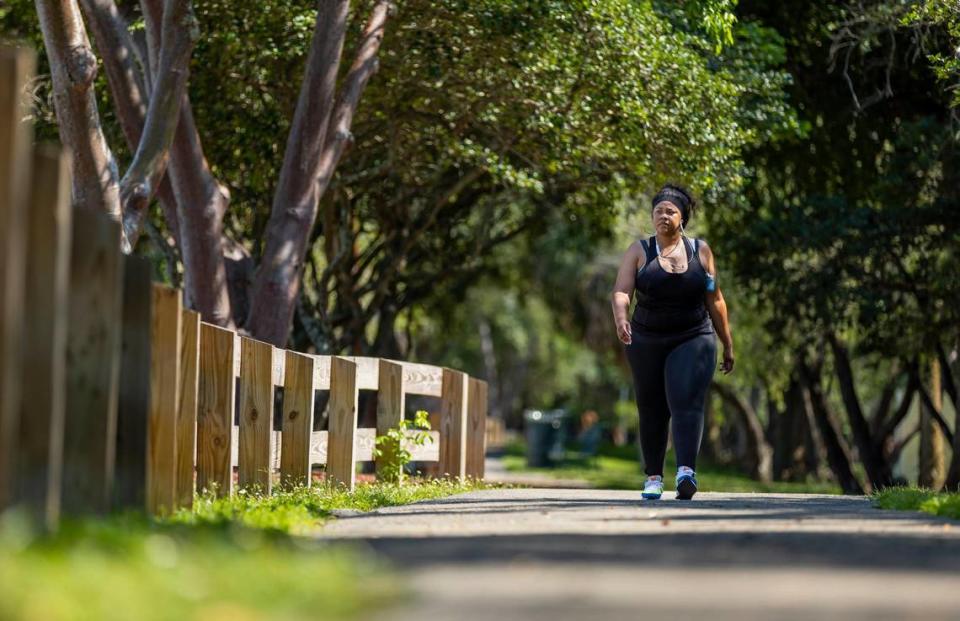
He noted that for younger residents who recently graduated from college, a $2,700 apartment may not be affordable. Gilbert said part of the housing crisis seen in South Florida is tied to the idea that the American dream is a single-family home.
“We have to try to really redefine that because here in Miami-Dade County, in South Florida, we just can’t accommodate for that version of the American dream anymore,” he said. “You can still make a home in other ways.”
As far as how the city plans to grow and keep its bedroom-community charm, Ferguson said, “You can’t do both. There will be changes. You just can’t.”
She said development is needed, but it’s also important for residents to have a say in how that happens. “This is what our community, I believe, is still struggling with, how do we get even more input into the type of changes that we see?”
For now, Grant welcomes the changes coming to the city. “It’s beautiful that they want to bring Miami Gardens up-to-date so we can showcase some of what’s in the Black community.”

